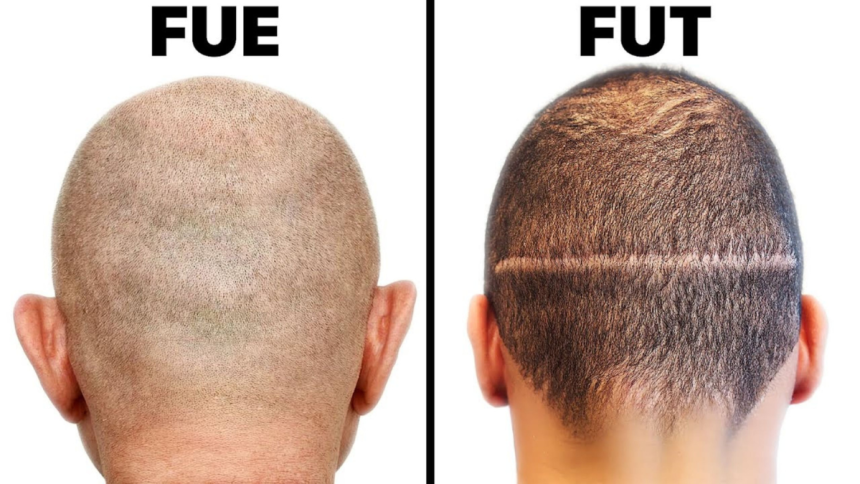Hair loss affects millions of people worldwide, significantly impacting their confidence and self-esteem. When considering hair restoration options, many individuals find themselves standing at a crossroads between two primary surgical techniques. The choice between Follicular Unit Extraction (FUE) and Follicular Unit Transplantation (FUT) can feel overwhelming, especially when both procedures promise natural-looking results.
Choosing the right hair transplantation clinic and surgical technique requires careful consideration of several factors, including healing time and final aesthetic results. This comprehensive guide will explore both FUE and FUT procedures, helping you understand which option might be the best fit for your specific situation.
What is FUE Hair Transplant?
Follicular Unit Extraction (FUE) represents a minimally invasive approach to hair restoration that has gained tremendous popularity in recent years. This technique involves extracting individual hair follicles directly from the donor area, typically the back and sides of the scalp, using specialized micro-punches. The FUE hair transplant vs FUT comparison often highlights FUE’s precision and reduced scarring as key advantages.
The FUE procedure begins with the surgeon identifying healthy donor follicles and carefully extracting them one by one. Each follicular unit contains one to four hair strands, and the extraction process requires exceptional skill and patience. After extraction, these follicles are meticulously prepared and implanted into the recipient areas where hair loss has occurred.
Key Benefits of the FUE Technique
The advantages of FUE hair transplantation extend beyond the surgical procedure itself:
- Minimal scarring: Individual extraction points heal quickly, leaving tiny dots that are virtually invisible
- Faster recovery: Patients typically return to normal activities within a few days
- No linear scar: Unlike strip harvesting, FUE doesn’t create a continuous scar line
- Flexible styling options: Shorter haircuts become possible without visible scarring
- Reduced discomfort: Less post-operative pain compared to traditional methods
- Natural appearance: Individual follicle placement allows for more artistic hairline design
What is FUT Hair Transplant?
Follicular Unit Transplantation (FUT), also known as the strip method, involves removing a strip of scalp tissue from the donor area and dissecting it into individual follicular units. This established technique has been refined over the decades and remains an excellent option for many patients seeking hair restoration.
During a FUT procedure, the surgeon removes a horizontal strip of skin from the back of the head, typically measuring several inches in length. The donor area is then carefully sutured closed, while technicians dissect the removed tissue under microscopes to separate individual follicular units. These units are then implanted into the recipient areas following the same principles as FUE transplantation.
Advantages of the FUT Method
FUT offers several compelling benefits that make it an attractive choice for many patients:
- Higher yield: More follicles can be harvested in a single session
- Cost-effective: Generally less expensive than FUE procedures
- Established technique: Decades of refinement have perfected the method
- Efficient process: Faster harvesting allows for larger transplant sessions
- Excellent survival rates: Follicles maintain their integrity throughout the process
- Suitable for extensive baldness: Ideal for patients requiring significant coverage
FUE vs FUT Hair Transplant: Direct Comparison
Understanding the differences between FUE and FUT hair transplant techniques requires examining various factors that influence treatment outcomes and patient satisfaction. Both techniques achieve excellent results when performed by skilled professionals, but they differ in several important aspects.
Scarring and Healing
The most noticeable difference between these methods lies in scarring patterns. FUE creates numerous small, circular scars that heal as tiny dots across the donor area. These marks are barely visible, allowing patients to wear very short hairstyles without concern. FUT, conversely, produces a linear scar where the tissue strip was removed, which can be effectively concealed with longer hair.
Healing time varies between the two approaches, with FUE typically requiring less recovery time. The small extraction sites heal quickly, while FUT patients need additional time for the linear incision to heal properly. Both procedures require careful post-operative care to ensure optimal healing and results.
Procedure Duration and Comfort
FUE procedures generally take longer to complete due to the individual extraction process. Depending on the number of grafts needed, FUE sessions can extend from six to twelve hours. FUT procedures typically require less time since the strip removal and dissection can be performed more efficiently.
Patient comfort during the procedure varies depending on the technique. FUE involves numerous minor extractions, resulting in minimal discomfort, while FUT requires suturing the donor area, which can cause more initial discomfort. Both procedures use local anesthesia to ensure patient comfort throughout the process.
Who is a Good Candidate for Each Procedure?
Selecting the appropriate technique depends on individual factors, including hair loss pattern, lifestyle preferences, and expectations for future hair loss. A qualified hair transplantation clinic will evaluate these factors to recommend the most suitable approach for each individual.
Ideal FUE Candidates
FUE works particularly well for patients who:
- Prefer wearing short hairstyles
- Have smaller areas requiring treatment
- Want to minimize visible scarring
- Lead active lifestyles requiring quick recovery
- Have sufficient donor hair density
- Prefer multiple smaller sessions over one extensive procedure
Ideal FUT Candidates
FUT may be more suitable for patients who:
- Need extensive coverage in a single session
- Don’t mind wearing longer hairstyles
- Want to maximize the number of transplanted follicles
- Are concerned about cost considerations
- Have limited donor hair that needs to be used efficiently
- Prefer completing treatment in fewer sessions
Recovery and Aftercare Differences
Post-operative care plays a crucial role in achieving optimal results with either technique. Understanding recovery expectations helps patients prepare adequately and follow appropriate aftercare protocols.
FUE Recovery Process
FUE recovery typically involves:
- Days 1-3: Mild swelling and discomfort in donor and recipient areas
- Week 1: Small scabs form over extraction sites, and gentle washing begins
- Week 2: Most scabs fall off naturally, and normal activities can resume
- Month 1: Full healing of extraction sites, transplanted hair may shed
- Months 3-6: New hair growth begins to appear
- Month 12: Final results become visible
FUT Recovery Timeline
FUT recovery follows a similar pattern with some key differences:
- Days 1-5: More significant discomfort due to suturing
- Week 1: Sutures are removed, and careful washing protocols begin
- Weeks 2-3: Linear scar begins healing, activity restrictions continue
- Month 1: Donor area healing progresses, transplanted hair sheds
- Months 3-6: New growth begins, scar continues to fade
- Month 12: Full results achieved, scar becomes less noticeable
Making the Right Choice for Your Situation
Selecting between FUE and FUT requires careful consideration of personal factors and professional guidance. The decision between FUE hair transplant and FUT shouldn’t be made in isolation, but rather through consultation with experienced professionals who can assess individual needs.
Consider lifestyle factors such as profession, activity level, and grooming preferences. Athletes or individuals in physically demanding careers might benefit from FUE’s quicker recovery time. Those prioritizing maximum hair density in a single session might find FUT more suitable.
Budget considerations also play a role, as FUE procedures typically cost more due to the time-intensive nature of extracting individual follicles. However, the investment in either technique can provide long-lasting results that justify the expense.
Conclusion
Both FUE and FUT represent excellent options for hair restoration, each offering unique advantages suited to different patient needs. The choice between these techniques should be based on individual circumstances, preferences, and professional recommendations from a qualified hair transplantation clinic.
Success with either method depends mainly on selecting an experienced surgeon and following proper aftercare protocols. Whether choosing FUE or FUT, investing in professional hair transplantation can provide lasting results that enhance both appearance and self-confidence.
Lynn Martelli is an editor at Readability. She received her MFA in Creative Writing from Antioch University and has worked as an editor for over 10 years. Lynn has edited a wide variety of books, including fiction, non-fiction, memoirs, and more. In her free time, Lynn enjoys reading, writing, and spending time with her family and friends.















